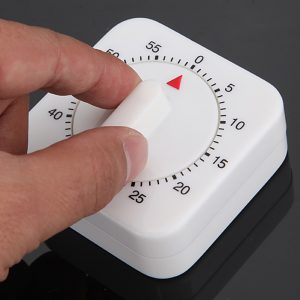
After a bitter winter, the trees are flowering, the temperatures are climbing, and the sun is shining. You know what that means. People start visiting!
As surely as everyone mysteriously disappears during the cold weather, they reappear in force after the thaw. They want to drop by for coffee, hosting wine and cheese parties, and throw barbecue parties at the drop of a hat.
I have two major beliefs in life. The first, as an organizer, I believe in being proactive. Nothing feels better than opening your door to unexpected guests feeling prepared. Second, carpe diem, enjoy or seize the moment. We never know what life has around the corner. To live without regrets means to open your door to opportunity now.
Does your home need a little organizational catch up? No worries. You’re not alone, and you still have time.
If entertaining is your priority, begin with your “public spaces.” By that I mean, any spaces guests would normally walk through during a visit: foyer, the living room, kitchen, dining room, and powder room.
Next, list those rooms in order of priority. You may want to start with the easiest first. Accomplishment breeds motivation. Tackling one room at a time, methodically work your way around the room.
Instead of mentally searching for each item’s purpose, try looking at the reverse thought pattern. Ask yourself, “When was the last time I used this?” This is truly the best way to predict the usefulness of an object.
You will want 4 bags for things: 1) staying in the room, 2) going elsewhere in your home, 3) things being donated, and 4) things being tossed. You may also consider selling items. The desire to do so varies from person to person. Selling things via consignment stores, Craig’s List, eBay, or other sources is up to the individual. Always consider the time involved and shipping expenses in each transaction versus the estimated value of the items being sold. Another consideration is safety. Do your homework. Research safe practices. Take the same safety precautions when selling a $15 item as you would with a $1,500 item.
When you’re finished sorting a room, take a moment to place the items you selected to remain in the room. Find homes for the things going elsewhere. Put the bag(s) of donations in the car, and toss the trash(s). Then, begin room two.
It’s much easier to maintain order when a room is fully organized than if it’s partially complete. In addition, it’s easier to maintain order if we have organization “behind the scenes.” This refers to drawers, closets, cubbies, etc. If everything has a place to go, and that place is convenient, organization is easier to maintain. Storage spaces should always allow a little room to grow. Nobody likes shoving things into a tightly packed drawer. Order will deteriorate quickly.
Adding ten minutes of organizing maintenance time to each day helps keep that clutter at bay. It’s similar to brushing your teeth to maintain oral health, or exercising to maintain your fitness. A few minutes of putting things in their place each day goes a long way.
Lastly, make a list of pantry items that won’t soon perish and add them to your grocery-shopping list. Soft drinks, wine (if you imbibe), nuts, cheese, etc. If you always have fruit in the house, all these items can quickly be thrown together for a spontaneous visit. Do you have a favorite play list of music you can delegate to someone in the family? If not, go to www.pandora.com to select some background music.
Embrace the unexpected. Your guests will think you’re so organized.
There are a lot of social networking sites out there. There’s Facebook, Twitter and Instagram; but what about Pinterest, “The World’s Catalog of Ideas”
Pinterest members can create an unlimited number of themed virtual pinboards of products and ideas that they are interested in such as organization for example! In turn, these virtual boards can be followed by others and “pins” can be “repinned” onto their own boards. As social networking sites are pretty much all interlinked, your ideas can be shared with a wider audience that just those who are users of Pinterest.
As with almost everything, there are positives and negatives. No worries though, the positives far outweigh the negatives! Those negatives seem to vanish after the learning curve.
Let’s get those pitfalls out of the way first. I’ve been a Pinterest user for several years now and quickly learned the following things:
Now for the good stuff, otherwise known as the power of Pinterest!
– For example, create a board for your pantry which could use an overhaul! Give it a fun Name like Giddy Up, Tidy Up My Pantry!
– After creating the board, use the Description area as a place to keep measurements of the heights between shelves as well as the length and depth of the shelves. Add in any products that you think you’ll want, that are on the top of your head, so that you won’t forget to look for them later. Having this quick reference guide will come in handy as you are doing your shopping!
– Then decide if you want to keep the board a Secret! Maybe you’ll want the big reveal to show off on your other social media! You can share your secret with anyone you want though, these are your Collaborators.
However you decide to use Pinterest just have fun with it. Search for me at Open Doors Organizing Services…and keep an eye on that clock!
Is it possible to live in a small area? You bet it is!
Most of us know people living in small houses or apartments, going to college and living in a dorm for the first time, or moving from a big home to a smaller one. Even if you don’t, you may have experienced one of these situations yourself at some point.
Did you feel challenged trying to fit everything in your new space? Does the person you know feel challenged trying to do the same thing?
If you follow these five (5) tips, it really is easier than you think:
1. Divide the space into specific areas for each activity (e.g., bill paying, watching TV, hobbies, laundry, reading, or studying). Furniture and rugs can be used to separate the different activities. For instance, your bedroom may have to act as an office plus a place to sleep and get dressed. Use a desk and file cabinet in one area of the room and the bed, bureau, and night stand in another. Keep the items in their specified areas; do not let them wander into the other activity areas.
2. Use milk crates on shelves that allow of extra space between them and the ceiling. Position the milk crate so the opening faces out. This way you’ll be able to store things both inside the milk crate and on top of it. It acts as a second shelf.
3. Use over-the-door storage units or command strips to hang things on the back of doors, in closets or on walls. You can hang items in or on them to get the items off your bed, chair, table, or desk. Don’t let them end up on the floor. The best part about command strips is that they do not damage the walls.
4. Use wall shelves to take advantage of vertical space. You can use your walls from floor to ceiling for storage.
5. Take advantage of the space under your bed. Use clear plastic bins that are specifically designed for under the bed. Measure the amount of clearance you have between the floor and the bed frame to make sure the bin fits. An option that affords you more storage space is raising the bed.
Just think, when living in a smaller area, you’ll have less to take care of. That frees up your time to do the things you want to do!
“We have thoughts, feelings and emotions, but we are not our thoughts feelings or emotions” Frances Vaughn
Mental Clutter is more mysterious and different from physical clutter. It hides, and resides in the mind disguised. It can be defined as an abundance of thoughts, and self-talk swirling around in our headspace! Layers of current thoughts, past thoughts and thoughts waiting to be triggered will occupy the mind space. Then if emotions arise, the mental clarity is gone and the cluttered brain exists.
On one level, mental clutter can be caused by:
On a deeper level, other mind clutter may not show up on your radar screen, depending on how self-aware you are. Things appear as they are, and we say it’s just the way it is!! We are blindsighted by the thought. Here’s one example: perfection. The thought of being perfect exists, regardless of why, or how it is there. You hold onto the belief that being perfect is the way to be and think. There isn’t much freedom in having this thought. It sabotages actions, and brings on negative self-talk.
Here’s what is true: we are in total control of what we choose to think or believe. Although what thoughts are in the mind can come from limiting beliefs you hold on to and live by. Sometimes these are generalizations, ideas or interpretations that you hold on to and then forget you did. At some time you may have felt strongly connected to them but now you’ve grown and changed and they don’t fit! All these thoughts may be laying dormant until something triggers it to surface. Next, you are living a life that’s not yours.
Try looking at where this thought, or belief came from. You may realize the roots of this. With introspection you realize that it doesn’t serve you anymore at this time. It’s time to give it up and free yourself. What I mean by this is, you may have lost touch with what’s really important to you – now, in the present. Maybe at one time all these thoughts, beliefs, and truths matched what was important to you. You can ask yourself, how true is this belief? The end result is living true to who you are, and who you say you are. In any given moment you can “CHOOSE” what you want to think or what doesn’t fit. The choices you make can motivate and uplift your spirit. Staying true to yourself brings inner peace.
Mindfulness and awareness will be the guide for clearing the mental clutter.
The principles of organizing apply here:
Assess what’s going on.
Take Action – Either jot down all that’s in your head until you feel empty. Seek support, like someone to talk or vent to. This helps in getting all the stuff out of your head.
Sort what thoughts to hold on to and why.
Identify what doesn’t serve you anymore. Ask yourself if any of those thoughts are draining you and your energy? Can you rephrase your thoughts so they empower you?
Choice – With acknowledgment, awareness and conscious choice, a clearing takes place. The result can be more head space! This is freeing. You may notice your energy higher. You may feel like you shed a layer or two, feel lighter, and quite positive.
Space has been created and quietness of mind and peace attained – You now have a blank slate.
 While I was going through items in a kitchen pantry with one of my clients, she commented on how easy it was to organize in the kitchen. When I asked why, she said that if food is expired it takes the decision out of her hands about whether to get rid of it or not. However, with the rest of the stuff in the home, she has to make the decision whether it has ‘expired’ or not. Deciding on the life cycle of your belongings is not easy, but when your spaces become too crowded or you can’t find your keys for the third time in one week, it’s time to take action.
While I was going through items in a kitchen pantry with one of my clients, she commented on how easy it was to organize in the kitchen. When I asked why, she said that if food is expired it takes the decision out of her hands about whether to get rid of it or not. However, with the rest of the stuff in the home, she has to make the decision whether it has ‘expired’ or not. Deciding on the life cycle of your belongings is not easy, but when your spaces become too crowded or you can’t find your keys for the third time in one week, it’s time to take action.
The life cycle concept is one way to work through the backlog of the accumulated clutter in the home and as a strategy to constantly weed out stuff. Our stuff has a life cycle that begins with it being most useful, most beautiful and most beloved. Over time our stuff becomes less useful (obsolete technology; items that wear out or break), less beautiful (fashion trends or our tastes change), and less beloved (reminders of past periods in our family’s life that may not be so important).
When you think about all of the items you bring in to your home on a weekly or monthly basis, it boggles the mind. But if you don’t take out as much as you bring in, over time you will begin to feel like your stuff is taking over. If some of your belongings are starting to become CRAP (Clutter that Robs Anyone of Pleasure), it’s time to consider whether those belongings are part of your family’s present and/or future. Keeping items from the past that no value or meaning to the present day leaves less room for additional items (or opportunities) for the future. For example, as your children grow, do you hold on to the toys they used to love, even though they don’t want them anymore?
Finally, if you are keeping items because you think they might be worth a lot of money, there are ways to find out. One way is to look on Ebay. Is anyone selling the item now? Has anyone sold that item in the last two weeks and for how much? Reputable auctioneers are also good resources for evaluating antiques and collectibles. Mass produced goods from 1960 or later have less of a chance to increase in value. But remember, regardless of what items may have been worth in the past; items are only worth what someone is willing to pay for them today.
When your clutter starts to take over your home, reevaluate whether the life cycle of those items is over or not. Someone else may be able to give your unneeded items a whole new life.
Clutter Quote: “Do not spoil what you have by desiring what you have not; remember that what you now have was once among the things you only hoped for.” Epicurus, ancient Greek philosopher
 Can you relate to this scenario? You’d been really good about keeping up with clutter and then came the holidays. Things got scooped up and hidden in closets instead of being put in their proper places. Since the New Year you haven’t even tried to tidy — you’ve been leaving items here, there and everywhere.
Can you relate to this scenario? You’d been really good about keeping up with clutter and then came the holidays. Things got scooped up and hidden in closets instead of being put in their proper places. Since the New Year you haven’t even tried to tidy — you’ve been leaving items here, there and everywhere.
BACKSLIDING is a common occurrence and can be rectified relatively easily. Here are some steps you can follow:
By following these guidelines, I guarantee the next time you have company or want to clean up, you’ll quickly be able to deal with the minimal clutter. By putting items in their assigned homes, you will save time and eliminate angst.
Click on the above title to learn more about the featured author.